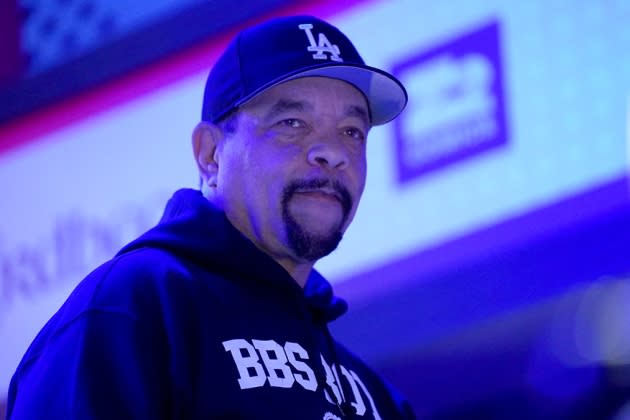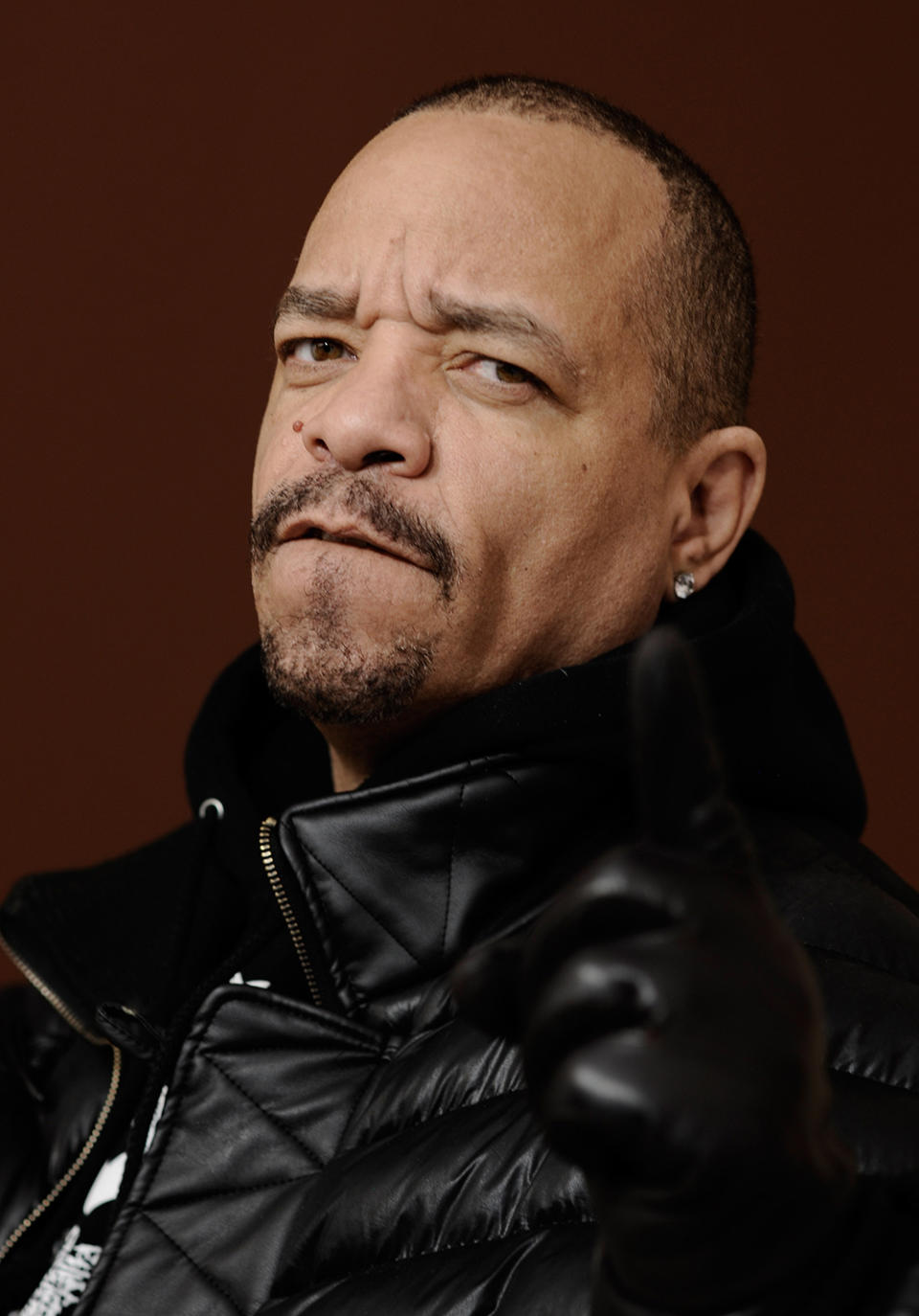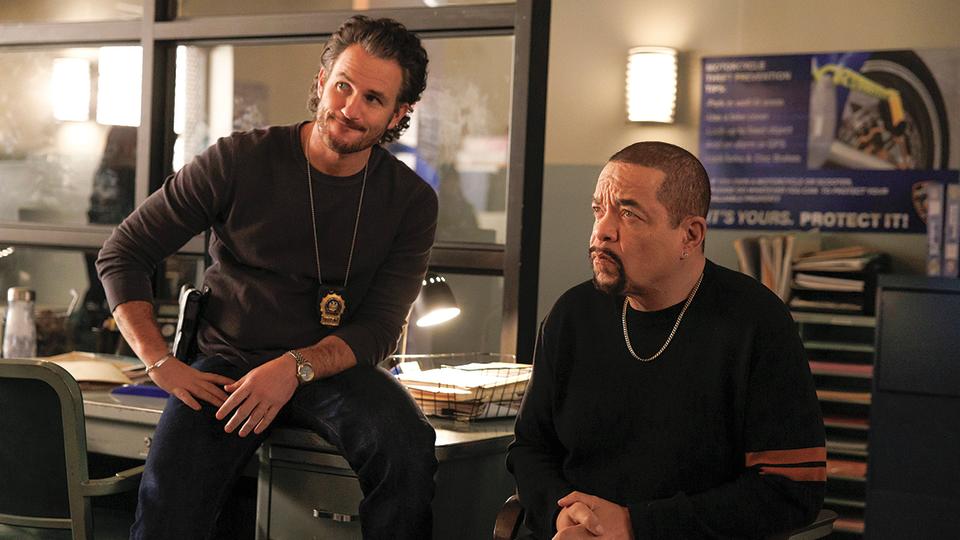Ice-T on the Hip-Hop Game, Hollywood Fame and Getting His Flowers: ‘I Wanted To Be Mentioned Among the Greats’

In his lifetime, Tracy Marrow has been everything from a dancer and a DJ, to a thief and a weed dealer. Yet, from the minute Marrow became Ice-T, his renown developed and grew.
Initially, being Ice-T meant becoming hip-hop’s most incendiary voice, a sinister avatar of the reality-rap style tagged by the press as “gangster” (along with his thrash metal band, Body Count). Equally famous was Ice-T’s gig as an actor-with-attitude in films such as “New Jack City” and — since 2000 — for television producer Dick Wolf’s police drama “Law & Order: Special Victims Unit” as NYPD Detective Odafin Tutuola.
More from Variety
The Man Behind 'Mandalorian': Jon Favreau Talks Season 3, 'Skeleton Crew' and His Walk of Fame Honor
Jonas Brothers Reflect on Rise to Teen Stardom and Bumpy Path to Hollywood Walk of Fame
Ice-T brings street cred to everything he does — including commercials. He beams with pride discussing his hood past and how its raw-knuckle spirit remains. Even seeing Ice-T riding a spin cycle, promoting Cheerios and heart health, is hardcore. And it all starts with hip-hop. Despite its current state of musicality being — in his words, “goofy” — Ice-T is the soul of rap’s rough potency. To wit: his appearance on the Feb. 5 Grammy Awards in a star-studded tribute to hip-hop in honor of the genre’s 50th anniversary.
Speaking by phone from New Jersey (with wife Coco and their dog, Lexus, in the background), Ice-T reminisced about the hip-hop game, further fame and getting his flowers by way of Feb. 17’s star ceremony on the Hollywood Walk of Fame.
If someone told you at your start that you would get a star on the Hollywood Walk of Fame, what would you have said?
I would have told you that was impossible. When I started making records, I didn’t come into the music business thinking I would be a star. I was just seeing if I could get a fan base. I didn’t want to be the best rapper. I just wanted to be mentioned among the greats: LL Cool J, Run-DMC. Getting any “star” was way out of reach.
Your name is synonymous with “West Coast rap,” but you’re from the East Coast and only came to California after your parents passed. Did art change your life in California?
Yeah, I went to Crenshaw High. That’s how I got introduced to Los Angeles gang culture. I also got introduced to dancers because I was in gymnastics. There was a dance, “locking,” made famous by the Lockers. Shabba Doo was a Locker, as was Toni Basil. I had a dance group called the West Coast Locksmiths, with whom I won a talent show in high school emulating the Lockers. That was my first time dealing with fame, feeling the excitement of being a celebrity.
When did making music become your game?
In high school, I read books by Iceberg Slim and Donald Goines, street novels based on hustling, pimping and gangsterism, written in the lingo of the life. Rapping didn’t happen until after I got my girlfriend pregnant, tried to do something legitimate and went into the Army. That’s when hip-hop came out. All the Army guys from New York brought tapes, and I got fascinated. I was already making rhymes for the gangbangers during the time I was dancing. I found that if you don’t want to have to deal with gangbangers, entertain them. My intention was to come home from the military, DJ and throw parties. I bought equipment, hooked up with promoters like Uncle Jam’s Army in L.A. That was a nice hustle. But I got more attention during parties when I rapped. That was easier than carrying speakers around.

Your first single, 1983’s “The Coldest Rap,” was by no means hardcore. A year later, your writing became politicized with “Killers,” then harder with “6 in the Mornin’.” What was your goal beyond reporting what you saw around you, “gangster rap” or otherwise?
“Coldest Rap” was players’ stuff. Hip-hop braggadocio. “Islands off the coast of France?” I’m in the hood. What did I know about France? But every rapper said they had a mansion and a yacht. When I wrote “Killers,” it was the time of Run-DMC’s “It’s Like That.” I rapped on “Killers” as two people, back-and-forth. Gangster rap? I heard Schoolly D’s “PSK” at a club in Santa Monica. What was so dope was that he wasn’t yelling. At that time, all rappers were yelling. Not Schoolly. Who was this fly motherfucker? Then I realized Schoolly was repping Parkside Killers, and that validated the idea of talking about THAT shit, someone repping a GANG. That was the inspiration for “6 in the Mornin’.” I even used Schoolly’s cadence. I took you on a South-Central adventure, writing what I called “faction” — factual occurrences put into fictional stories. Everything in “6 in the Mornin’” happened. It may just not have happened to me. That was “faction,” reality rap, depending on whose reality you were talking about. That didn’t get named “gangster” until [Ice] Cube did “Straight Outta Compton,” and referred to N.W.A as a gang. The press ran with that. Then I called myself the “original gangster.” As much as the press watches us, we watch y’all.
You recorded four hip-hop albums — “Rhyme Pays,” “Power,” “The Iceberg/Freedom of Speech … Just Watch What You Say,” and “O.G. Original Gangster” — then went to thrash metal with Body Count.
Ernie C was a guitar virtuoso who went to Crenshaw, used to do parties where he played Peter Frampton and set off homemade flash pots. Beatmaster V played drums, and, like Ernie, wanted to be in the studio with me. They were my closest friends, but I didn’t know how to fit them into hip-hop. During my tour with Public Enemy, I saw white kids moshing off of fast rap. If that was the case, what if I gave these motherfuckers some rock? But if we were going to do it, it had to be a cross between Suicidal Tendencies and Slayer.
The first time that people saw Body Count was during the first Lollapalooza in 1991, yes?
Ernie was friends with Perry Farrell who wanted me to be in Jane’s Addiction video for “The Gift.” Perry was doing this concert and wanted to book Ice-T. I had an hour slot, so I split the set, introduced Body Count and kicked ass. I told the audience we were about to show them that rock and roll had nothing to do with color — it’s a state of mind. Body Count is Ice-T over metal. Same attitude. The vocal delivery was intended not a rap-ish, but rather straight metal. Listen to Slayer. Tommy [Araya]’s not singing.
You continued with Body Count, even getting Grammy-nominated for 2020’s song “Bum-Rush” for metal performance. But you stopped making Ice-T solo albums in 2006. Why?
Hip-hop changed. The music got goofy to me. The kids started looking weird. It all turned into something I wasn’t comfortable with. There was a point where I was selling tons of records, then it cooled off. I felt a certain way. Then I realized Public Enemy, Rakim, Big Daddy Kane and Wu-Tang Clan weren’t selling records, either. There was a paradigm shift. These kids got softer, and soft is not something I’m able to give audiences. The first word in hip-hop is “hip” so how something stays hip for over 10 years is difficult. … Besides, I still do my “Ice-T: Art of Rap” shows, which is my legacy hip-hop. Think of it like seeing Frank Sinatra. You want to hear the classics.
In 1991, Body Count courted controversy with “Cop Killer,” which you stated was written in character about vengeance against the police. How do you see the duality of “Cop Killer” and “SVU,” especially in the era of Black Lives Matter, George Floyd and Tyre Nichols?
I’m acting in both. I never killed a cop. In “Cop Killer,” I play a man who was mad at the police, snapped and went after them based on policy brutality. That’s acting. Where the media glossed it, is when they said that it was really Ice-T saying to go kill the police. I didn’t do that. The same is true of “SVU.” I’m not a cop. I’m the furthest thing from a cop. As far as the dilemma with police now — yeah, it is difficult.

People have said that our television shows are police propaganda, making the police look good. I understand that argument. The cop I am on our show is an SVU detective. If I had to be a policeman in real life, it would be that type of cop because there’s no gray area. You’re chasing rapists and pedophiles. It’s hard to be a bad cop in that unit. On the B-side, if you only play bad guys all the time, what are you putting out there? You’re a celebrity, but you’re pushing the line of being a drug dealer or killer. In acting, someone has to play the slave owner, play these weird people in the world. When I got the job at “SVU,” Dick Wolf said to me, “Ice, you don’t like cops, right?” I told him that during my criminal past, I didn’t hate cops — they were my opponents. [He asked,] “But you admit we need them, right?” I said, “Yeah.” So, Wolf told me to play the cop that we need. And if I play the cop that we need, I won’t have any problems with it — my cop is a far stretch from the cop that the cop killer wants to kill.
Considering your effect on the culture, you were at the peak of your reign as a rapper when you began acting. What were you hoping to achieve?
I was taking advantage of an opportunity that was presented to me. I never wanted to act. I was ready to turn it down because they wanted me to play a cop, at the same time I’m putting out an album called “OG.” Are you kidding me? Play a cop? But my friends were like “Motherfucker, if you turn this down, you’re a real-life sucker.” So, I did it. I didn’t know I was going to be successful at it. Acting wasn’t something that I desired to do, but now I realized that it was something that I was supposed to do. Like I got a Tide commercial. I didn’t want some motherfucking Tide commercial. Oh, it’s Coldwater Tide and I’ll be with “Stone Cold” Steve Austin? Word. The Honey Nut Cheerios commercial I have out now? They got at me. I didn’t ask to be on a Cheerios box. But they told me that Ice-T is healthy, vibrant, still out there and cool — that people love me. So that’s who I am.
Watch the Walk of Fame livestream below:
Best of Variety
Sign up for Variety’s Newsletter. For the latest news, follow us on Facebook, Twitter, and Instagram.
